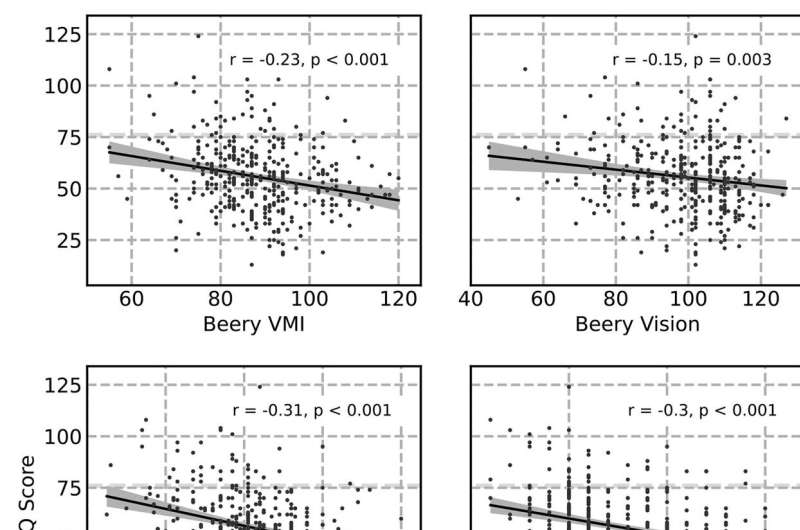
Females are often underdiagnosed with being on the autism spectrum because they often mask their symptoms more successfully than males. The key to understanding why may be in a simple eye exam.
New research from the University of Waterloo’s School of Optometry and Vision Science found a difference between how females and males with high autistic traits process visual information. This provides researchers with a possible correlation to explain why some females are underdiagnosed and to help medical teams understand how a person’s neurodivergent presentation is tied to how they process sensory information. This study looked at differences based on sex assigned at birth.
The paper, “Associations Between Autism Spectrum Quotient and Integration of Visual Stimuli in 9-year-old Children: Preliminary Evidence of Sex Differences”, was published in the Journal of Autism and Developmental Disorders.
“We found that the level of someone’s autistic traits was meaningfully tied to their performance in various kinds of visual tasks,” said Andrew Silva, a postdoctoral fellow at the University of Waterloo School of Optometry and Vision Science.
“Interestingly, this effect was dependent on the sex of the child. To be specific, males with high autistic traits tended to be worse on both object recognition and hand-eye coordination tests, whereas females with high autistic traits were totally fine with object recognition tests but showed the same association as males with the hand-eye coordination tests.”
The researchers studied a cohort of 400 children aged 9 to 10 in New Zealand who exhibited a full range of possible autism traits and conducted a variety of vision and visuomotor processing tests with them. They then examined the relationship between the performance of those tests and their autism traits.
One test had the children watch at a computer screen with many dots moving in random directions and asking participants to determine whether the dots had a net upward or downward movement. Another test asked the children whether the display contained either a circle or a square.
In both tests, the difficulty increased as the children got correct answers. When the maximum difficulty was reached, that was determined to be the threshold value and was then correlated with the autistic traits score.
“The part of the visual system that handles object recognition is also connected to face recognition, recognizing nonverbal communication and facial expressions,” Silva said. “The fact that this system was not impacted in our sample of females with high autistic traits is consistent with the idea that this system allows females to better navigate social situations and mask neurodivergence.”
“However, what we do not yet know is whether this visual process is preserved due to differences in how males and females are brought up in society or whether there is an inherent difference in the visual systems of neurodivergent children.”
“In the end, these results highlight that human neurodiversity is not a singular concept—different sexes, and indeed different people, express autistic traits in their own unique way. Thankfully, this lesson is becoming better understood both by researchers and by the general public.”
More information:
Silva, A.E. et al, Associations Between Autism Spectrum Quotient and Integration of Visual Stimuli in 9-year-old Children: Preliminary Evidence of Sex Differences. Journal of Autism and Developmental Disorders. (2023). DOI: 10.1007/s10803-023-06035-1
Can a simple eye exam help diagnose autism? (2023, September 25)
retrieved 25 September 2023
from https://medicalxpress.com/news/2023-09-simple-eye-exam-autism.html
part may be reproduced without the written permission. The content is provided for information purposes only.
This content was originally published here.
